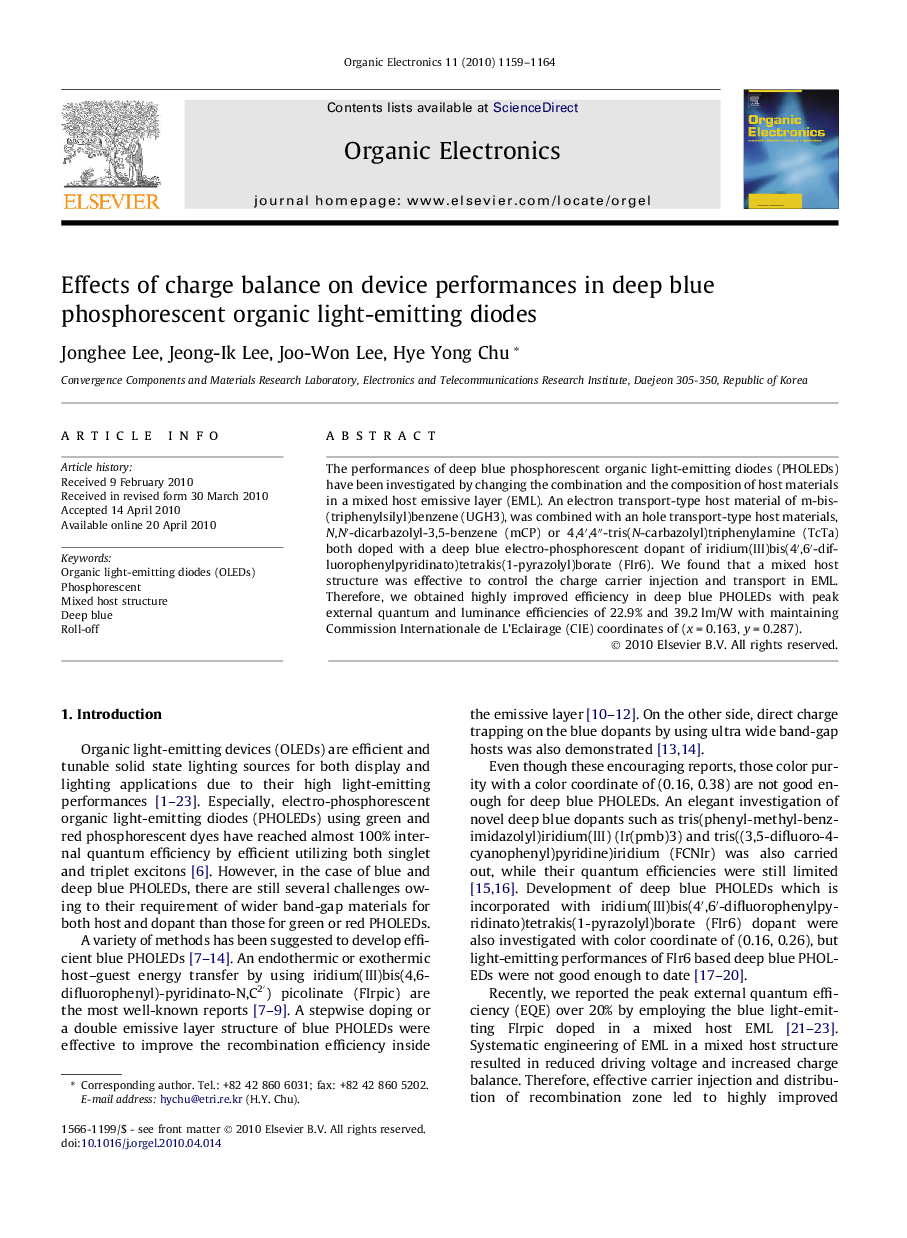| Article ID | Journal | Published Year | Pages | File Type |
|---|---|---|---|---|
| 1267800 | Organic Electronics | 2010 | 6 Pages |
The performances of deep blue phosphorescent organic light-emitting diodes (PHOLEDs) have been investigated by changing the combination and the composition of host materials in a mixed host emissive layer (EML). An electron transport-type host material of m-bis-(triphenylsilyl)benzene (UGH3), was combined with an hole transport-type host materials, N,N′-dicarbazolyl-3,5-benzene (mCP) or 4,4′,4′′-tris(N-carbazolyl)triphenylamine (TcTa) both doped with a deep blue electro-phosphorescent dopant of iridium(III)bis(4′,6′-difluorophenylpyridinato)tetrakis(1-pyrazolyl)borate (FIr6). We found that a mixed host structure was effective to control the charge carrier injection and transport in EML. Therefore, we obtained highly improved efficiency in deep blue PHOLEDs with peak external quantum and luminance efficiencies of 22.9% and 39.2 lm/W with maintaining Commission Internationale de L’Eclairage (CIE) coordinates of (x = 0.163, y = 0.287).
